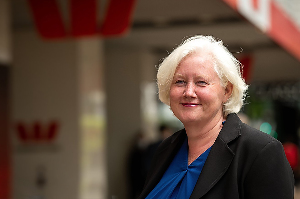
The Bank of Canada (BoC) was the first to go with a 25bps cut to bring its policy rate to 4.75%. The European Central Bank (ECB) followed suit, taking its main deposit rate to 3.75%.
For the BoC, inflation has fallen significantly and has remained below 3% for the past four months. Economic growth is also weak, and unemployment is steadily rising. The Eurozone faces a similar macro backdrop with services disinflation finally making good progress.
The data suggests the fight against inflation is slowly being won. Policy settings no longer need to be as restrictive.
The focus instead is centred on the future path of rates. And this is where the two central banks diverged. The BoC said it is “reasonable to expect further rate cuts”. Forward guidance from the ECB, however, suggested a meeting-by-meeting approach.
The ECB raised its inflation outlook, with the target 2% now not to be reached until 2026.
Long way to getting inflation back in the box
In New Zealand, Westpac customers in most centres do not expect CPI inflation will reach 2% until late 2026.
Westpac says this gels with the RBNZ’s view and that of its own forecasts which suggest inflation will not settle close to 2% until 2026.
The fortunes of the labour market will be key in determining the pace and durability of the disinflation process. Customers universally expect the labour market to ease this year – to 5.2% against the RBNZ’s projected 5%. A meltdown in the labour market, as occurred in the global financial crisis, is not seen as likely at this point.
Customers see New Zealand as being last out of the gate on easing interest rates. Westpac Group’s global forecasts also reflect this view, with an easing in the US in September, Australia in November and New Zealand in February.
Forecast brought forward
In its latest weekly data wrap, ANZ has tweaked its Official Cash Rate (OCR) forecast and now expects the first OCR cut to come in February, rather than May.
Chief economist Sharon Zollner says the bank has been talking for some time about the risks towards cuts occurring earlier than May, and now has confidence to centralise those risks into its forecast.
She says the bank’s economists put store in the inflation indicators in its business outlook survey.
“In addition to the tried-and-true indicators, in recent years we’ve added some interesting new questions, the answers to which are telling precisely the story the RBNZ needs to hear.
“Wage settlements – both actual and expected – as well as firms’ expected costs and pricing decisions have fallen steadily.”
She says inflation data will soon start to make a more convincing case that the RBNZ is winning this war. We also expect that the RBNZ will take quite some convincing to actually cut the OCR, given it’s in the nature of its mandate to be cautious when assessing the outlook for inflation.
However, the economists believe that point is likely to be reached well before August next year, which is the RBNZ’s current forecast for the first OCR cut.
“We currently see the risks as balanced around our updated call but expect the market to continue to punt on cuts this year, " Zollner says.
The knowledge that the RBNZ always reserves the right to change its mind as the data unfolds will no doubt ensure that the market continues to take what the RBNZ says about the path of policy so far ahead with a grain of salt, she says.




Comments
No comments yet.
Sign In to add your comment